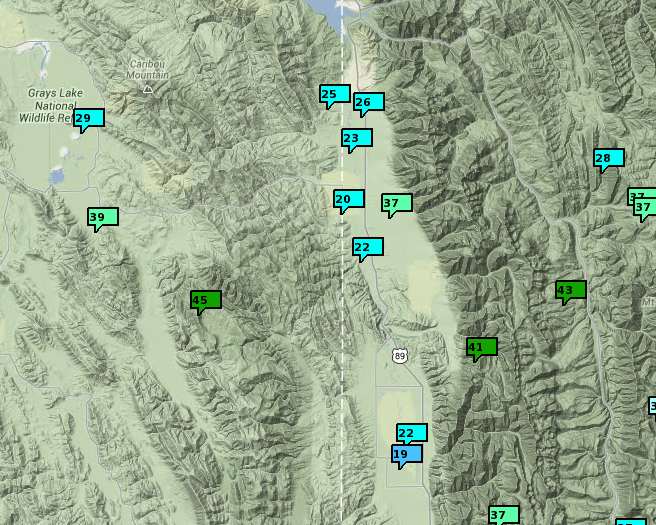Here are a couple of cam view this morning of the beautiful mid winter scenes.
 |
| North View from Snow King |
 |
| North View from Star Valley Ranch |
The strong ridge of high pressure which has resulted in the extended period of clear skies and dry weather for this part of the country remains in place this Tuesday morning.
Given the still low sun angle of January and very dry airmass, even with full daytime sunshine temperatures in the high valleys of Western Wyoming, from day to day are actually gradually cooling. Illustrating this is the weather station at Thayne Elementary School which measures the amount of solar insolation along with temperatures.
 |
| Daily Minimum temperatures and daily solar insolation for January 2014 at Thayne ES |
Note that once the sunny days began on the 15th nighttime temperatures became colder reaching a monthly low of -11 this morning.
Riverton Balloon sounding this morning illustrates the strong inversions with the warmer air above.
 |
| Riverton Radiosonde 6am 01/21/14 |
Just a few hundred feet above the surface the temperature is above freezing and does not go below again until around 700 mb or 10,000 feet.
Following is a map of the observed minimum temperatures for Tuesday 1/21/14 across the region
 |
| Minimum temperatures 01/21/14 |
Quite the contrast from below zero in most valleys to generally teens in the higher elevations.
Here is a close look at minimums in both the Star Valley and Jackson Hole regions this morning.
 |
| Minimum temperatures 1/21/14 |






No comments:
Post a Comment